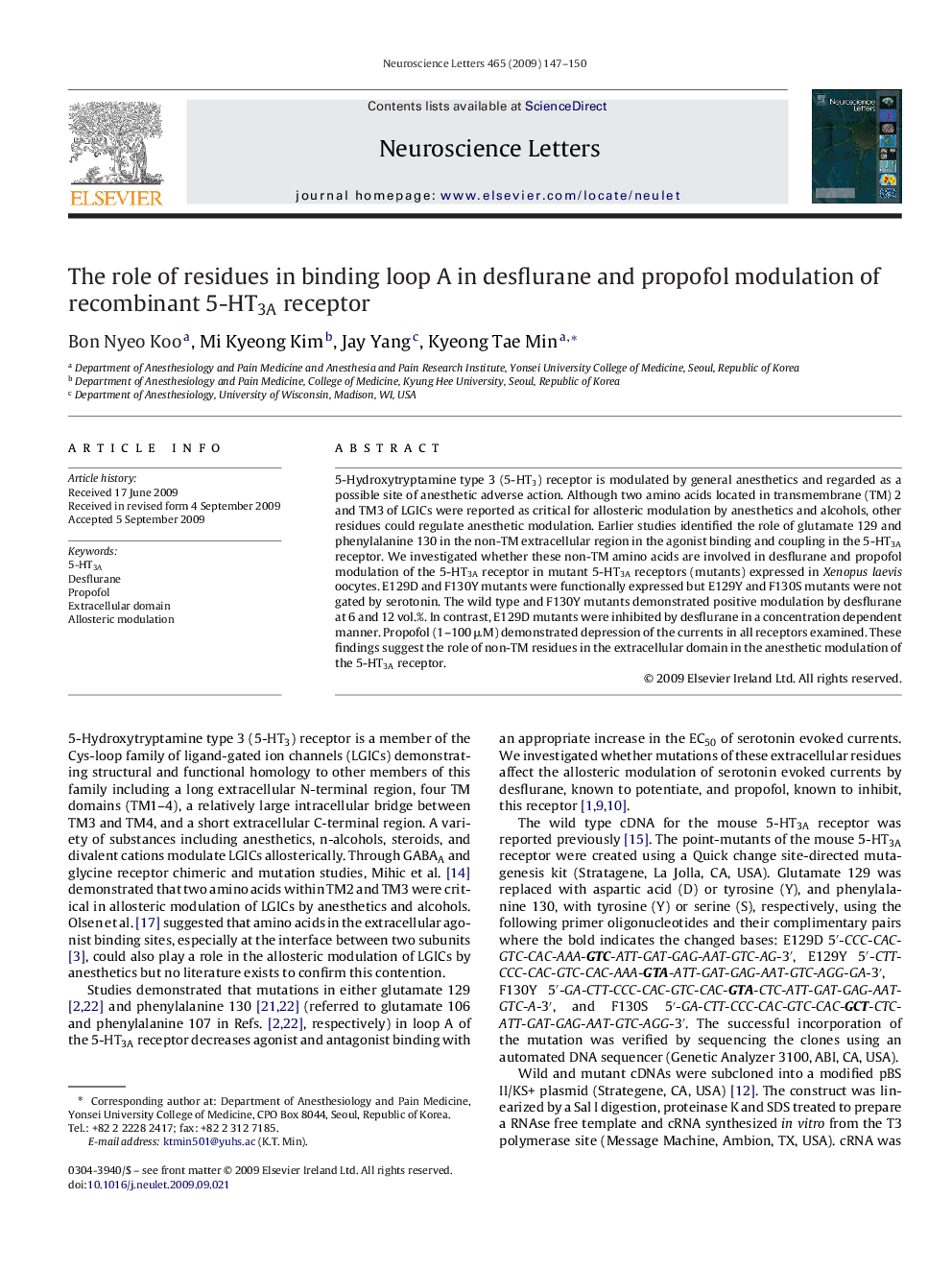| Article ID | Journal | Published Year | Pages | File Type |
|---|---|---|---|---|
| 4346673 | Neuroscience Letters | 2009 | 4 Pages |
Abstract
5-Hydroxytryptamine type 3 (5-HT3) receptor is modulated by general anesthetics and regarded as a possible site of anesthetic adverse action. Although two amino acids located in transmembrane (TM) 2 and TM3 of LGICs were reported as critical for allosteric modulation by anesthetics and alcohols, other residues could regulate anesthetic modulation. Earlier studies identified the role of glutamate 129 and phenylalanine 130 in the non-TM extracellular region in the agonist binding and coupling in the 5-HT3A receptor. We investigated whether these non-TM amino acids are involved in desflurane and propofol modulation of the 5-HT3A receptor in mutant 5-HT3A receptors (mutants) expressed in Xenopus laevis oocytes. E129D and F130Y mutants were functionally expressed but E129Y and F130S mutants were not gated by serotonin. The wild type and F130Y mutants demonstrated positive modulation by desflurane at 6 and 12 vol.%. In contrast, E129D mutants were inhibited by desflurane in a concentration dependent manner. Propofol (1-100 μM) demonstrated depression of the currents in all receptors examined. These findings suggest the role of non-TM residues in the extracellular domain in the anesthetic modulation of the 5-HT3A receptor.
Related Topics
Life Sciences
Neuroscience
Neuroscience (General)
Authors
Bon Nyeo Koo, Mi Kyeong Kim, Jay Yang, Kyeong Tae Min,
